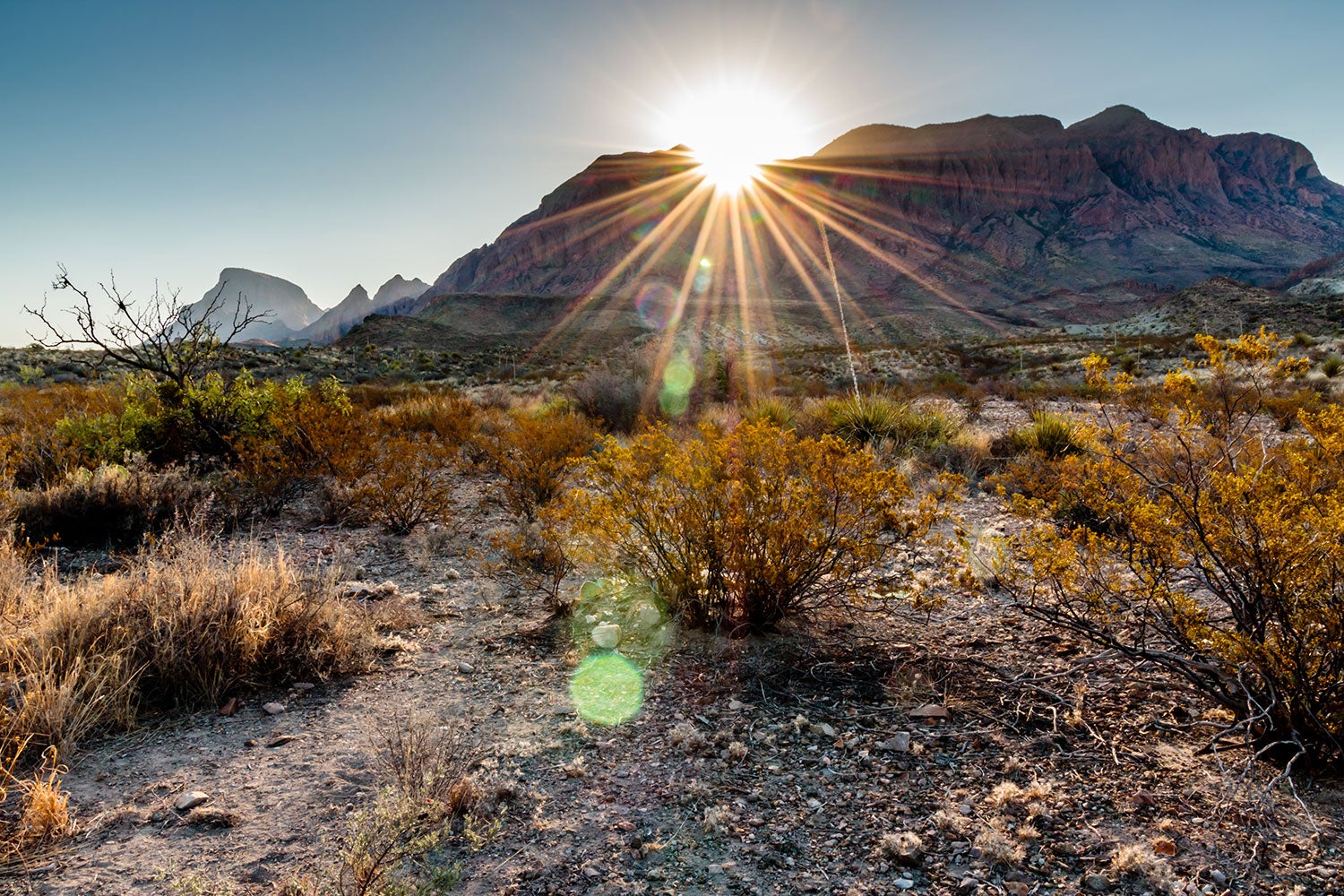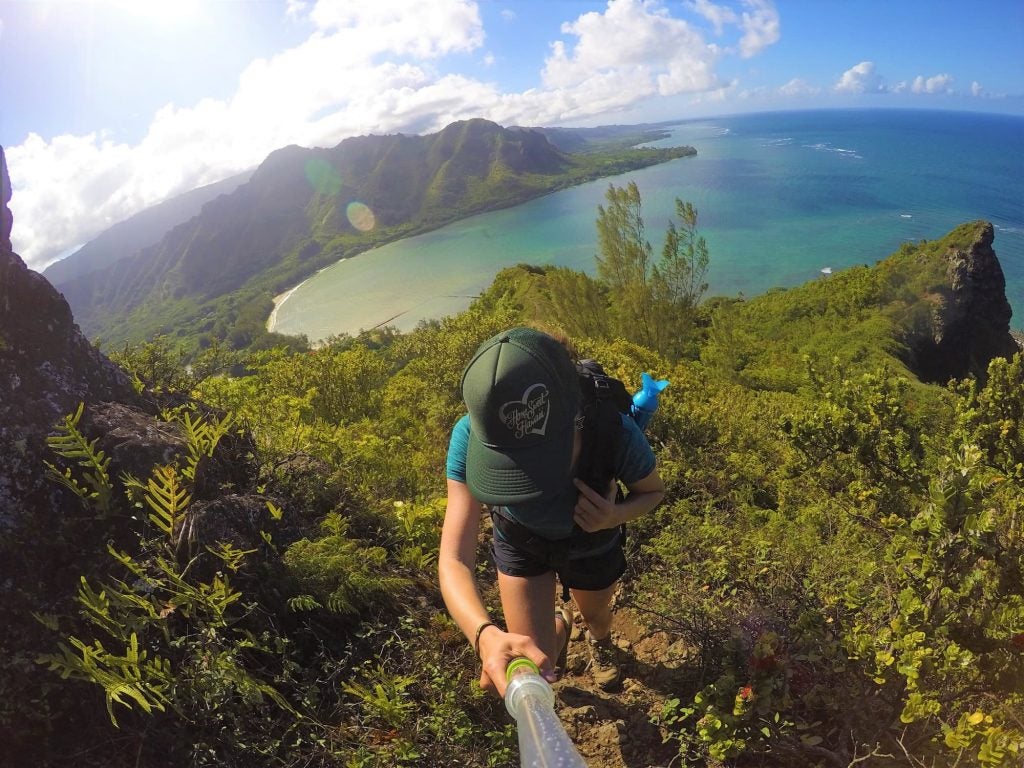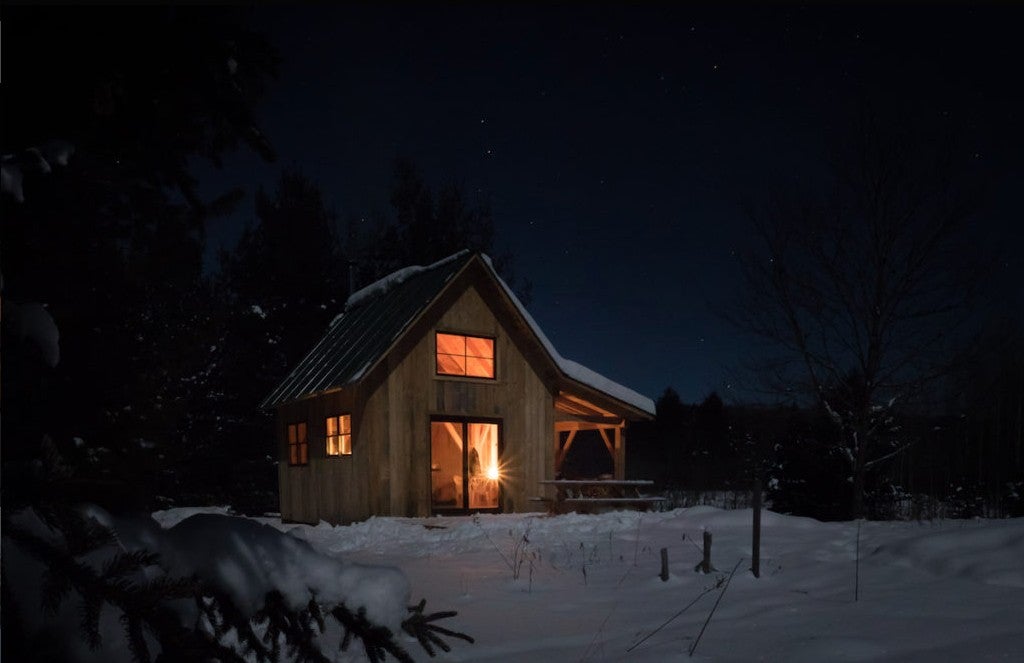This article was brought to you by our friends at Gregory, the makers of water reservoir backpacks. Gregory packs are designed to be lightweight and durable so you can carry your water through all kinds of environments, including a Big Bend camping trip.
Big Bend National Park isn’t the most popular national park in the country— clocking in at just 41st in the number of annual visitors. And that’s a darn shame given how much there is to do there. In addition to camping in Big Bend, there are mountain biking trails, hiking trails, hot springs, river rafting, overlanding, scenic drives, and a level of biodiversity you might not expect in the heart of the Chihuahuan Desert.
That said, preparing for a Big Bend camping or backpacking trip is a little different than heading into popular parks like the Great Smoky Mountains or Yellowstone. Desert excursions don’t have to be extra challenging, but it’s important to understand the extreme conditions of desert environments and to prepare accordingly.
Important Advice for Big Bend Camping
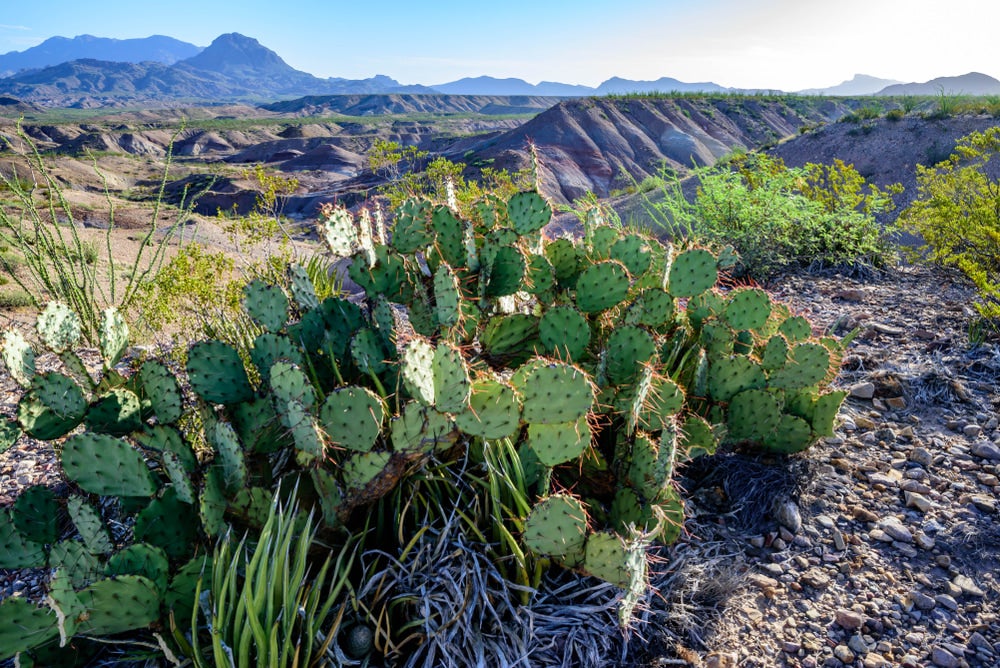
Photo from Shutterstock.com
It’s not that Big Bend is more dangerous than other parks— Yellowstone and Great Smoky Mountains each see more accidents per year than Big Bend, in part because they have so many more visitors per year. It’s just that Big Bend—and camping in Texas in general—has different challenges because of its geography, weather, and wildlife— challenges that can take a little extra preparation for campers who aren’t used to exploring desert environments.
Big Bend National Park, like most desert ecosystems, can see big variations in temperature depending on the time of year. On average, January is the coldest month, with highs in the low sixties and nighttime temperatures in the upper thirties. June and July are the hottest months, with peak temperatures in the mid to upper nineties and lows in the seventies. Within those monthly ranges, however, temperatures can also vary greatly depending on altitude and time of day, making layers essential.
Naturally, you’ll want to bring all the usual items you pack for car camping or backpacking, like a tent, ground pad, backpacking pack, etc. But there are a few items that take on special importance when you’re camping in the desert.
1. Pack Jerry Cans and Hydro Packs to Stay Hydrated
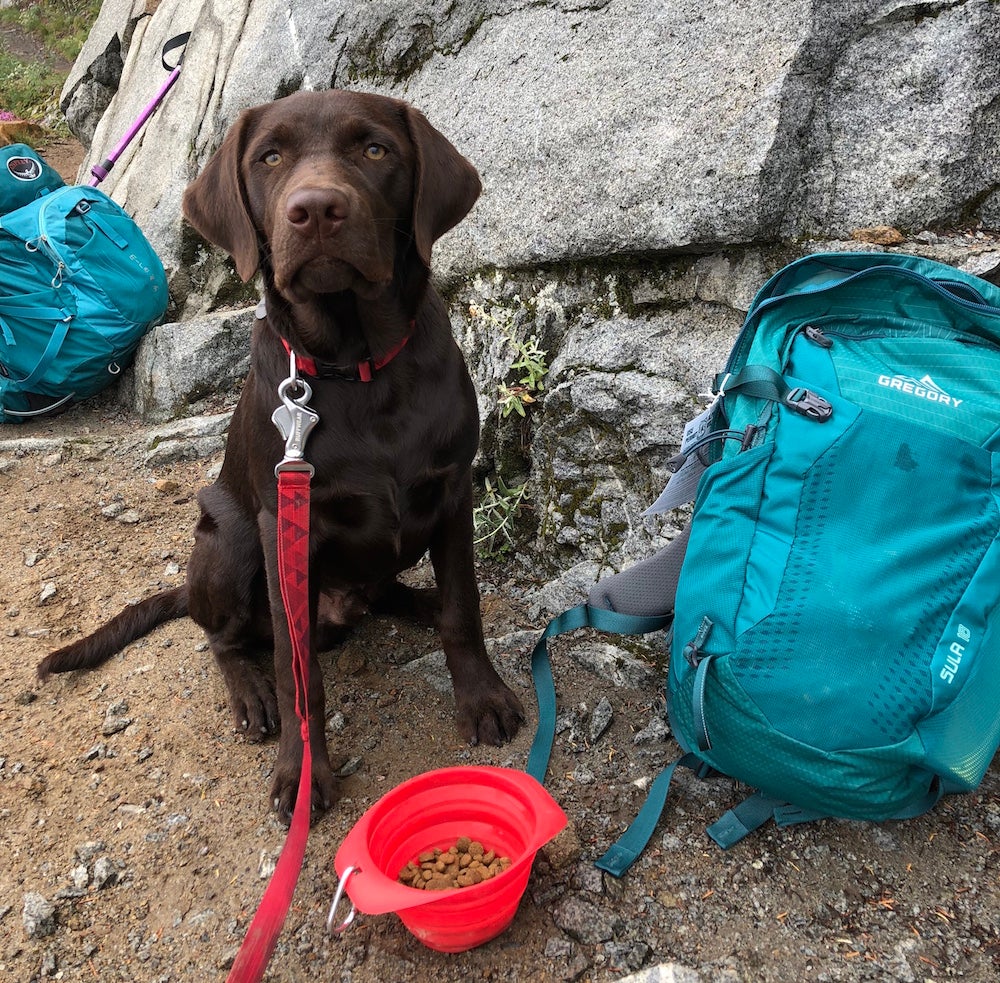
Photo from The Dyrt camper Sasha W.
On any desert camping trip, whether in Big Bend or elsewhere, your number one concern should be having enough water. It’s a good idea to bring jerry cans (larger water containers) and a water reservoir backpack for when you’re out and about.
Experts recommend that you drink a liter of water each hour when it’s hot out. Budget about a gallon of water per day per person. What size water containers you choose depends on how long you’ll be camping in Big Bend, and what kind of camping or backpacking you’ll enjoy.
A seven-gallon jerry can, for example, will certainly hold all the water you need for a multi-day trip, but will weigh about sixty pounds once full. That’s great for RVers or car campers, but perhaps not the best choice for a backpacker who needs to lug water and their gear. By the same rule of thumb, you’ll also want a backpack with a water reservoir that can hold plenty of water for hiking excursions or the distance between water caches (more on that later).
2. Preserve Food With The Right Cooler
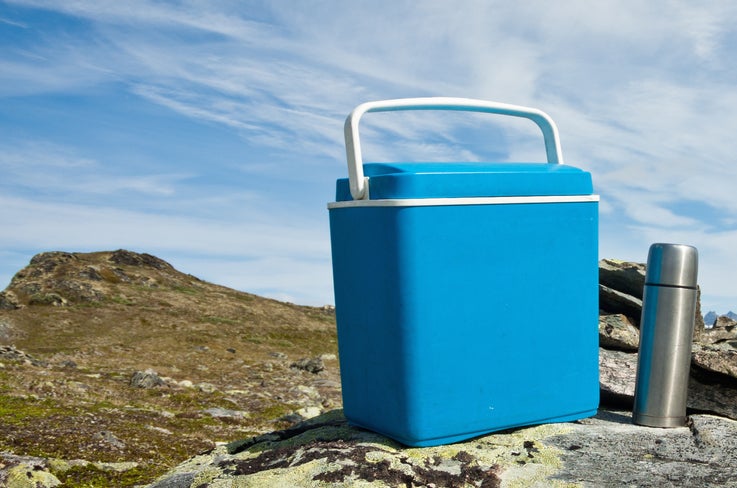
Photo from Shutterstock.com
Unless you plan to subsist on freeze-dried backpacking meals (don’t forget to budget water for cooking), you will likely want a cooler to keep your food fresh. If you’re only camping for a day or two, or just need the cooler to supplement the fridge in your RV, a soft insulated cooler designed to keep things cold for twenty-four hours or more will be sufficient.
If you’re camping in Big Bend for longer, you might consider investing in a brick of dry ice. For that, you’ll want a hard-sided cooler. You’ll also want to keep the dry ice a safe distance from your sleeping area and wherever you’ll be hanging out. That’s because rather than melting, dry ice turns into carbon dioxide gas.
A cooler will come in handy for keeping foods that are easy to cook on your camp stove fresh. That’s crucial considering Big Bend does not allow campfires, even if you’re car or RV camping. A cooler is also great for preserving foods that help you stay hydrated like bell peppers, cucumbers, oranges, apples, watermelon, cantaloupe, and avocados. Some desert hikers swear by frozen grapes as the ultimate treat.
3. Protect Your Eyes and Photos From the Sun

Photo from Shutterstock.com
The bright, hard light in the desert is striking. The harshness of the sun on the desert landscape is one of many things that makes Big Bend so special.
But it can also be hard on the eyes, and can create haze and glare that make it especially difficult to see long distances.
Purchasing polarized sunglasses with UV protection will not only keep your eyes safe from damage, but will also help you see more clearly— especially if you’re trying to focus on the road ahead, the trail, a body of water, or especially reflective sand. The same is true for polarized photography equipment that will help your digital or SLR camera better capture the rich colors of the desert without losing visual information to glare.
4. Don’t Forget Your Passport

Photo from Shutterstock.com
Big Bend National Park is a rare area of public land that lies directly on the Mexican border, connecting to Parque Nacional Maderas del Carmen on the other side. If you bring your passport, you can take a ferry into Mexico to continue exploring the region.
It’s illegal to get out on the Mexican side of the river if you’re rafting or kayaking, or to enter Mexico anywhere other than an official border unless of course you’re compelled to do so in an emergency. Always take your passport if you’re rafting, as border patrol assumes anyone riding the Rio Grande might have crossed into Mexico and back.
5. Prepare For Unexpected Weather
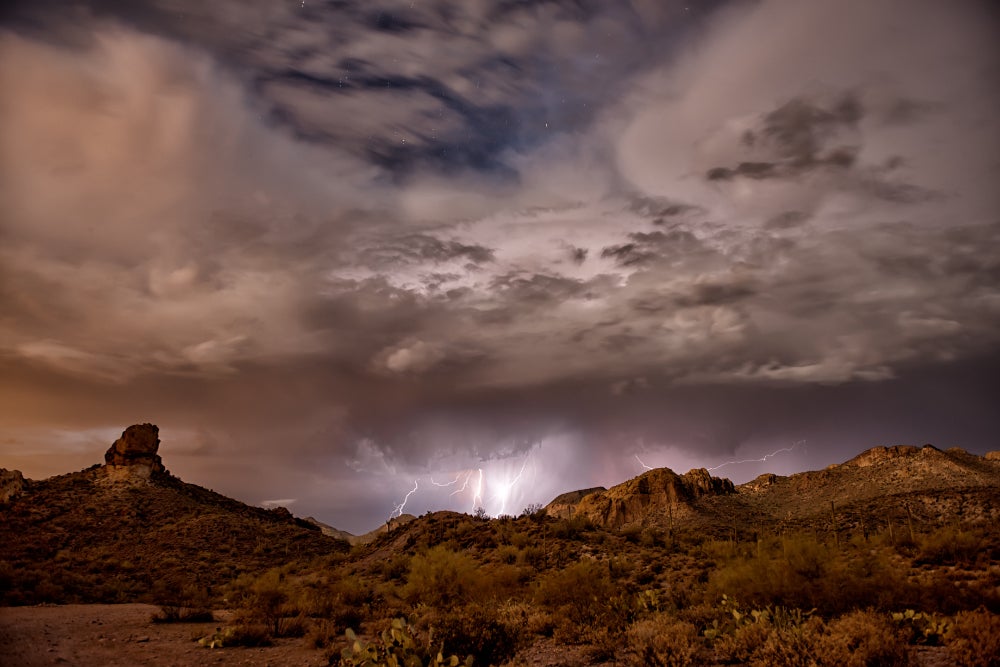
Photo from Shutterstock.com
Not only can the desert get scorching hot during the day and bone-rattling chilly at night, but it also offers little shelter from frequent storms. Pack plenty of layers and a good rain shell to protect you from the elements. You might not need them, but it’s better to be safe than sorry. The same goes for a rainfly for your tent and backpack, especially if you’re trekking instead of car camping and can’t rely on your vehicle for shelter.
A NOAA weather radio is also a smart item to pack, and can help you stay abreast of what’s blowing your way. Weather alerts can help you avoid dire situations like being in an arroyo during a flash flood, or on a high peak prior to a lightning storm. Even if you’re car camping or RV camping, a NOAA radio can help you plan the timing of your excursions into the park that are especially weather-dependent.
6. Cache Water While Camping In Big Bend
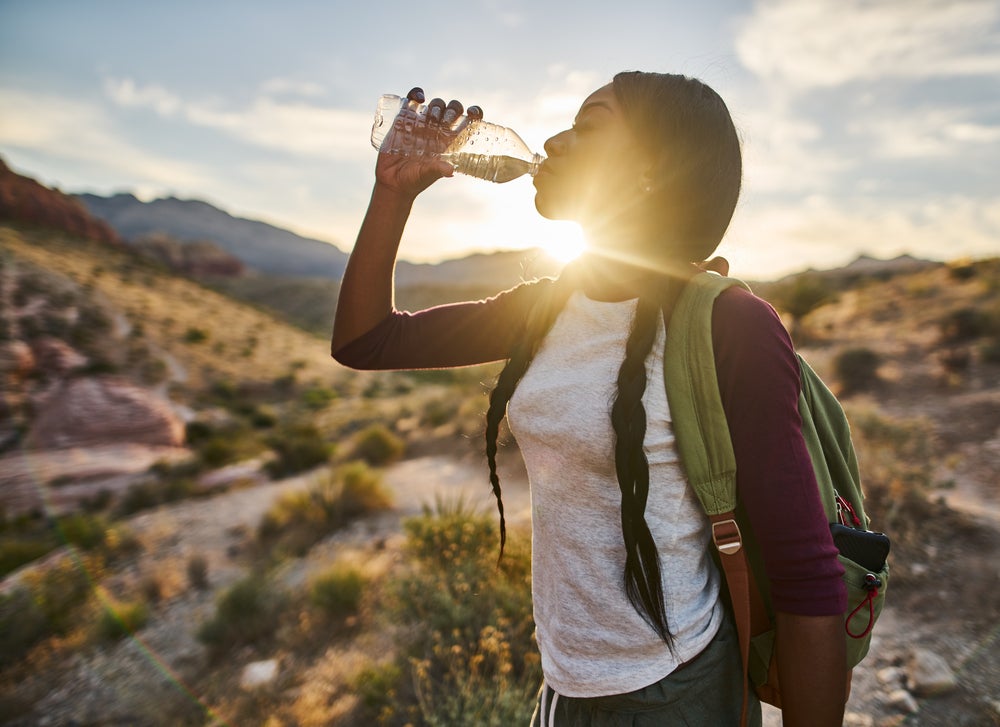
Photo from Shutterstock.com
Caching water is an important technique to learn any time you’re hiking or backpacking in the desert, even in the winter. Just 5-10 inches of rain a year fall in the Chihuahuan Desert, most of it during the summer. Slightly more tends to fall in the mountains, but it’s still only 15-20 inches. While the temperatures are cooler outside of summer, conditions also become much dryer, making water even harder to find.
On top of that, water is a precious resource for everything in the desert—not just people. Did you know that there are over 70 kinds of butterflies in Big Bend National Park, and that the area is also in the migration path for Monarch butterflies? There are also 450 bird species that live or migrate through Big Bend— that’s half of the total number of species in all of North America. In addition to things that flutter and fly, there are a whole host of mammals, invertebrates, and reptiles who need to make the most of any moisture they can find.
That means it’s far better to bring in your own water in caches than to consume any water resources you might find in the desert that Big Bend National Park’s full-time residents need to survive. It also makes it crucial to practice Leave No Trace principles to avoid contaminating precious puddles, pools, springs, and streams with food, soap, lotion, feces, etc.
Caching water is the best method for ensuring you pack in plenty to drink without compromising the desert ecosystem. Simply divide your water into 1-2 gallon containers labeled with your name and the date they were filled. You then either hike or drive to different points on the trail you plan to cover (like, say, the popular Outer Mountain Loop in Big Bend) and leave a cache of water at each one. Keep in mind that you may need all-wheel drive to reach some of the best water caching locations.
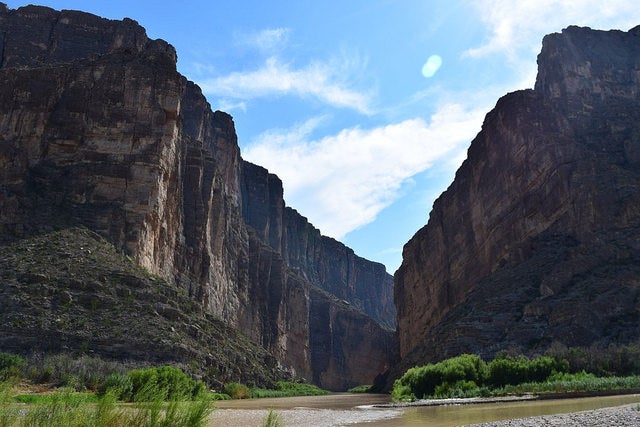
Photo from The Dyrt camper Richard M.
Use bear canisters or the bear boxes that are installed at different points in the park to prevent animals from getting into your cache. Should a bear canister or box be unavailable along your intended route, you can disguise your water and hide it fifty feet or more off the trail. If you’re worried about finding it again, record the GPS coordinates of each water drop-off point.
You likely won’t be the only person caching water in Big Bend, especially during the winter. It’s possible you’ll see other hikers’ caches along the way.
As you continue down the trail, you can either collect and break down your empties, packing them into a bigger container or hanging them from your pack. You can also go back to pick up your empties the same way you dropped them off, with the help of a vehicle or on a series of shorter hikes back to your cache points. On an out-and-back, you can simply pick up your used containers in reverse order and carry them back to your campsite or car.
Camping in Big Bend is on a lot of bucket lists, and for good reason. It’s a majestic, one-of-a-kind desert landscape full of towering rock formations, stunning canyons, brilliant wildflowers, and jaw-dropping color. With a little extra preparation, you can make it easy, safe, and fun to explore all the campgrounds in Big Bend and the 150 miles of trail lacing through this park, from the Rio Grande to Emory Peak to the Chisos mountains.
Once you learn these desert camping techniques, you can easily apply them at other desert destinations like Guadalupe Mountains National Park and Jumbo Rocks in Joshua Tree.
Related Campgrounds:
- Big bend State Park Camping, Presidio, TX
- Lost Maples State Natural Area, Vanderpoole, TX

